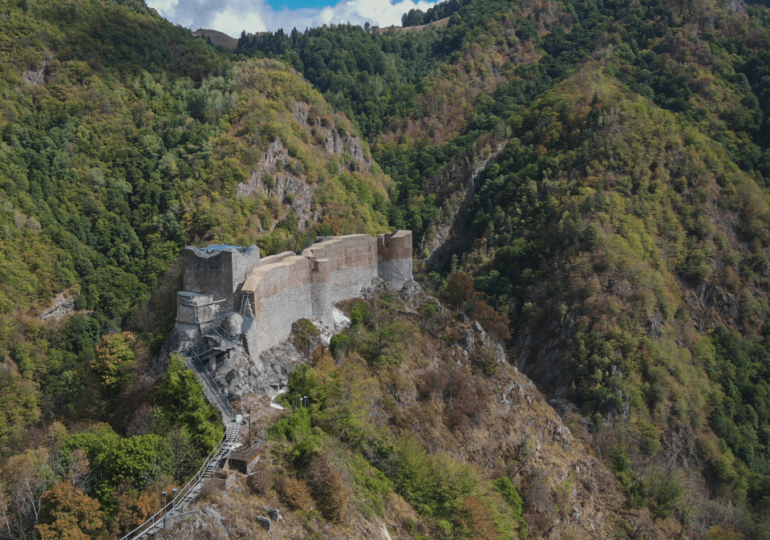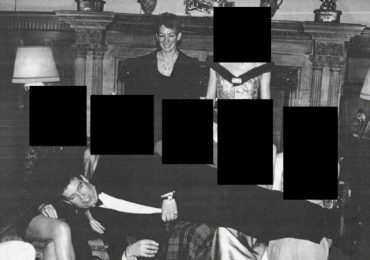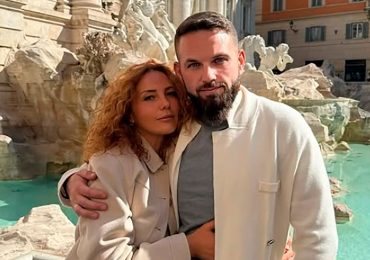THE “true” home of Dracula where bloodthirsty Vlad the Impaler lived is set to open to the public.
Until five years ago, Poienari Castle in the city of Curtea de Arge, Romania, had been left untouched for decades.
Denis GrigorescuPoienari Castle, located in the city of Curtea de Arges, sits 800m high on a cliff[/caption]
Denis GrigorescuOnce a sprawling castle, it was damaged by a string of earthquakes in the 1990s[/caption]
Denis GrigorescuIt’s the ‘true’ castle of the notorious Vlad the Impaler – or Vlad Dracula[/caption]
AlamyPortrait of Vlad III, known as Vlad the Impaler or Vlad Dracula after he is said to have enjoyed impaling his enemies[/caption]
Cornel Popescu, manager of Arges County Museum, said Poienari is the “true” castle of Vlad the Impaler – the vicious figure that inspired Count Dracula in the Bram Stoker 1897 novel.
The “impenetrable” fortress – perched on an 800m cliff – was home to the notorious Vlad the Impaler, also known as Vlad Dracula, during his reign.
Many believe Bran Castle – a national monument in Transylvania – is the castle that inspired the fictional bloodsucker.
But Popescu said it has “no connection” to Vlad – a warlord with a taste for blood.
He told The Sun: “Vlad the Impaler-Dracula reigned three times.
“During the second reign, he built up only three monuments – the Comana and Snagov monasteries and Poienari castle.
“Bran castle has no connection with Vlad the Impaler. He did not build that castle – it is only marketing for tourism.
“The true castle of Vlad the Impaler is Poienari castle.”
Only accessible via 1,500 steps, Popescu said the Gothic fortress was never conquered by Vlad’s enemies – despite several attempts.
“Thanks to its spectacular and unreachable position, the fortress has never been conquered, although the Turks tried several times,” he said.
The fortress was rebuilt in 1459 when Vlad the Impaler used slaves to make bricks, cut stones and finish the construction in just a week.
Many of the slaves fell from the cliff and died during the build.
Surprisingly, the eerie landscapes of Transylvania became popular with King Charles in the nineties and he now visits every year and even has a holiday home there.
Royal fans can even stay in the exact guest house that Charles owns and rents out to people looking to explore the Zalán Valley.
The Prince of Wales’s Guesthouse may look like a humble lodge from the outside, but it’s where the royal stays when he’s holidaying away from the likes of Buckingham Palace.
DARK PAST
Born in 1431 in Transylvania, a mountainous region in modern-day Romania, Vlad the Impaler was known for impaling his enemies on stakes in the ground and leaving them to die.
In a bloody battle in 1462, the tyrant is said to have left a field filled with 23,844 impaled victims in a bid to stop enemies pursuing the Ottoman forces.
He is thought to have killed up to 100,000 people in just six years.
It’s even rumoured that Vlad would dip his bread into the blood of his impaled victims.
His ruthlessness helped him achieve victory over the Turks in 1462.
It was Vlad’s father, Vlad II Dracul, ruler of Wallachia, an area south of Transylvania, who gave him the famous Dracula name.
In 1442, Vlad II was arrested along with his two sons – including Vlad the Impaler – and held hostage by enemies.
The true castle of Vlad the Impaler is Poienari castle
Cornel Popescu
Although Vlad II was released, Vlad and his brother were kept in captivity by the Ottomans.
According to some accounts, a young Vlad would have witnessed the enemies of the Ottomans being impaled – which may have played a hand in turning him into a ruthless killer.
After he was freed, his reign of terror began.
Transylvania and Wallachia were often the scene of bloody battles and Vlad was eventually killed.
Poienari was abandoned and later rocked by a string of earthquakes in the 1900s – destroying much of the castle.
But after a lengthy restoration, it’s set to open to the public for the first time.
Adrian Bughiu, vice president of Arges County Council, hopes to draw in 300,000 tourists in the first year of opening.
Vlad the Impaler
VLAD Tepes, or Vlad the Impaler, is one of history’s most murderous figures — and the inspiration for Count Dracula.
The Romanian prince was behind countless acts of unspeakable barbarity and ruthlessness.
His favourite method of murder was impalement — in which victims were lowered on to sharpened stakes, suffering an agonising death as their weight pulled them down.
Vlad was born in late 1431. His father, also Vlad, was military governor of Transylvania and belonged to the Order of the Dragon, a band of knights whose duties included crusading against Turks.
Vlad senior was given the surname Dracul because it means dragon in Romanian. Dracula is a diminutive form.
At 11 the young Vlad was seized by Turks and spent six years in captivity in Turkey, during which time he grew into a monster without compassion.
While he was away his father was overthrown as prince of the Romanian province of Wallachia and murdered, along with Vlad’s older brother.
At 25, Vlad killed his father’s murderer Vladislav II and seized power. Thus began a six-year reign of terror.
Vlad took revenge on those who helped topple his father by impaling the older ones and forcing the younger ones to march 50 miles to another town.
There they were made to build him a fortress — and many died in the process.
Vlad was a law and order fanatic. Petty criminals were impaled. Merchants who flouted trade laws were impaled.
Pretty much anybody Vlad disliked was impaled.
He considered all poor people thieves.
Once, he invited a crowd of them to a feast at his court in Tirgoviste. When they had finished he had the hall locked and burned to the ground with them inside, saying they were scroungers.
On another occasion he is said to have rounded up peasants and driven them off a cliff, beneath which he had placed row upon row of sharpened stakes.
Once, two Turkish ambassadors came to his court. Asked to remove their turbans, they refused on religious grounds — so Vlad got his guards to nail them to the screaming Turks’ skulls.
Vlad had a particular hatred for Germans, and many of his worst atrocities are depicted in German propaganda printed on the newly invented press.
One shows Vlad’s most appalling act of savagery, which came in 1462 as his heavily-outnumbered army fled through Romania from Turkish invaders.
Along the way Vlad torched his own villages and poisoned wells so the chasing Turks had nothing to eat or drink.
At Tirgoviste, he impaled 20,000 Turkish prisoners and ate as he watched them die.
The Turkish soldiers who found the “Forest of the Impaled” were so distraught they gave up the chase and went home.
Vlad was assassinated in 1476 — but 400 years on his bloodthirsty deeds provided the inspiration for Dracula, a fictional character literally thirsty for blood.
The ghoul first appeared in the 1897 novel Dracula by Irish writer Bram Stoker and has made dozens of movie appearances since.
Denis GrigorescuThe castle is set to reopen to the public – but it’s only reached via nearly 1,500 steps[/caption]
Getty – ContributorA drawing of Vlad III from 1560 shows the ruler impaling his enemies on huge spikes as he dines[/caption]
.King Charles owns a property in Transylvania and visitors can hire a room inside[/caption]
EPAKing Charles III receives flowers from locals as he arrives at his estate in eastern Transylvania last year[/caption]
Denis GrigorescuVlad the Impaler’s fortress was never conquered thanks to its remote location[/caption]
AlamyCornel Popescu, manager of Arges County Museum, says Bran Castle has no connection to Vlad and is a marketing ploy[/caption]
Leave a comment








